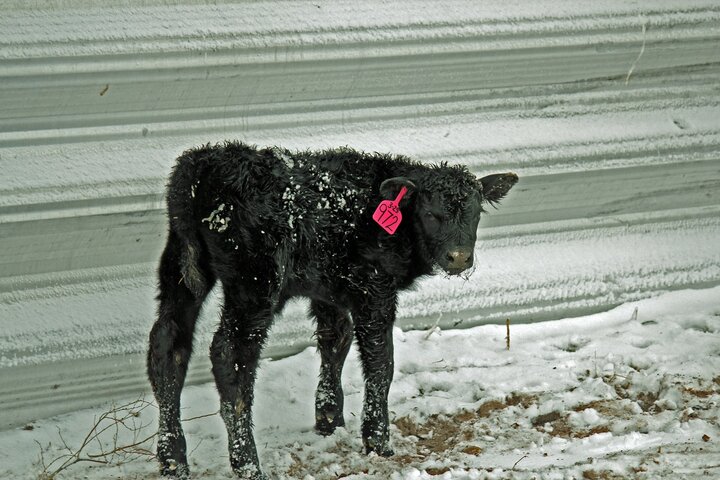As cattle producers, some of our modern challenges have been a shrinking labor force and aging cattlemen. These hurdles can reduce our capacity for care. The term “capacity for care” is used to describe the maximum population of animals that a given workforce with a given set of skills, equipment, and facilities can care for at a certain stage in the animal production cycle (e.g., calving season).
For example, three people may be able to provide adequate care to 300 calving heifers in good weather on a certain operation. However, in the event of a storm, the manager may have determined that one more person, space to keep five additional calves warm, and training one more of the existing staff members to tube-feed a newborn calf would be necessary to continue operating effectively. Overwhelming an operation’s capacity for care can rapidly lead to frustrated people and deteriorating animal health.
To prevent this, the manager in the example might be able to act now to line up someone to help if the weather turns, find the extra equipment needed to house and re-warm five more calves, and train one more of the existing staff members to tube-feed a newborn calf. Creatively increasing seasonal labor could be as extensive as hiring full calving season help or as simple as finding a neighbor that has a different calving season than your operation and discussing a labor trade. Identifying and preventing these types of bottlenecks in a system has the potential to reduce animal health problems down the road.
Another opportunity to increase capacity for care is remaining educated and knowing the facts. With the impending calving season, the following critical points are good to consider:
- First 4 Hours: Due to in-utero conditions in cattle, antibody absorption cannot occur during gestation and MUST occur through colostrum transfer. This most effectively occurs in the first 4 hours post-calving when the intestinal absorption potential of the calf is at its peak. This time frame provides the highest opportunity for transfer of passive immunity.
- ≤ 30 minutes: During cold, wet, and windy weather it can take 30 minutes or less for a newborn calf to drop below critical body temperature, decreasing its chances of survival. This varies greatly depending on a range of factors (weather combination, age of cow, calving pasture/lot status, provided protection). It is good to observe closely and act accordingly in each situation of deciding whether to take a calf in.
- 100° F: If a calf has a rectal temperature below 100° F, you should consider methods to warm the calf before providing colostrum replacer. If the calf is above a rectal temperature of 100° F proceed with feeding them a meal of colostrum replacer.
- 150g of antibodies: The minimum number of grams of antibodies, sometimes called globulin proteins or IgG, a newborn calf needs to have provided by a colostrum replacer is 150g. This is different than simply the grams of protein the product contains. Products labeled as “colostrum replacer” should contain 150g or more to achieve the ideal level of immunity. Products labeled as “colostrum supplements” generally contain around 50g IgG and are best to use when the calf received colostrum, but volume or quality are in doubt. With replacer and supplement products, you usually get what you pay for.
Lastly, are there investments you could make in facilities or technology that would elevate your capacity for care that could potentially increase calving season success? Using the term success instead of dollars or returns, because being successful through calving season can be measured in decreased stress, increased sleep, and overall operation morale. It could be as simple as the previously mentioned added pen space or as advanced as a remote video observation system. Some other things that come to mind as we face another unpredictable calving season could include addressing the amount of wind protection provided, having a suitable (clean) place to care for calves that are brought in, having a reserve of warm water in that same location to quickly care for animals brought in, and then get back out to deal with other urgent matters. Seeking out ways to address stress points can look extremely different from neighbor to neighbor and remembering to sometimes take a step backwards to observe the system can have the potential to put us ten steps forward by increasing our capacity for care.
Interviews with the authors of BeefWatch newsletter articles become available throughout the month of publication and are accessible at https://go.unl.edu/podcast.

